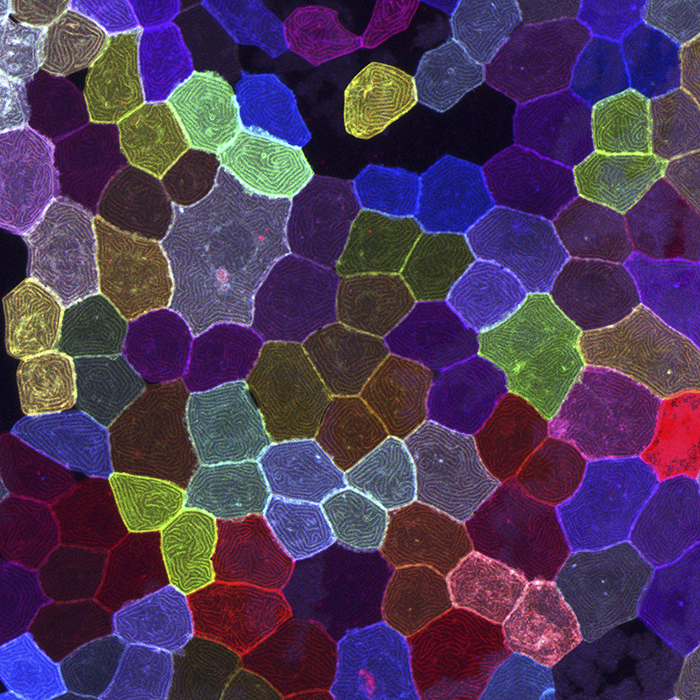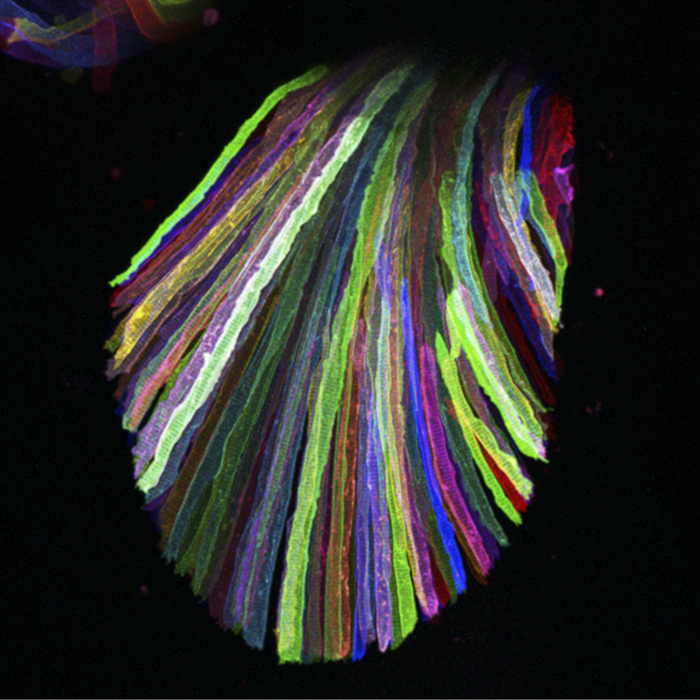
Dr. Chen-Hui Chen's Breakthrough Discovery - Unusual Skin Cell Division in Zebrafish
We are honored to be able to interview Dr. Chen-Hui Chen, Researcher at Academia Sinica in Taiwan. Dr. Chen has dedicated himself to studying tissue regeneration mechanisms, particularly in zebrafish due to their “remarkable ability to regenerate complex tissues following major injuries.” During his research, he and his team had a breakthrough discovery that under certain growth conditions, zebrafish’s skin cell division, without DNA synthesis, was able to form cells in the fish body surface with reduced and abnormal genomes. This finding, which was published in Nature in April 2022, challenges our fundamental understanding of cell biology, according to Dr. Chen.
Furthermore, one of Dr. Chen’s lab members, Dr. Keat Ying Chan (also the first author of the Nature study), was able to photograph “epithelial cells of palmskin zebrafish larva” which won “Image of Distinction” by the Nikon Small World 2022 Photomicrography Competition.
In the following interview, Dr. Chen outlines his research goals and his ultimate ambition – to improve human regeneration capability.
Q: Congratulations on your research paper titled “Skin cells undergo asynthetic fission to expand body surfaces in zebrafish”, published in Nature in April 2022. First of all, please share with us your education and research background.
A: I was born and raised in Taiwan. I earned a Ph.D. in Genetics from Dartmouth College and completed postdoctoral training at Duke University. In 2016, I returned to Taiwan to establish my own laboratory at Academia Sinica, where I focus on researching tissue regeneration.
Q: Please tell us more details about your paper published in Nature.
A: In the paper, we investigated the collective behavior of skin cells that contribute to animal growth and regeneration. To our surprise, we discovered a previously unknown type of cell division that cannot be categorized as either mitosis or meiosis. This finding challenges our fundamental understanding of cell biology.

Q: Your recent image titled “Epithelial cells of a palmskin zebrafish larva” was awarded “Image of Distinction” by the Nikon Small World 2022 Photomicrography Competition. Congratulations! Please tell us more about this image and the equipment you used when taking this image.
A: Congratulations to my graduate student, Keat Ying Chan, for capturing this award-winning image. The image depicts individual skin cells covering a live zebrafish larva, with each cell expressing a unique combination of red, green, and blue fluorescent proteins. We used a confocal microscope to obtain multicolor images like this one.
Q: You have stated that “we focus our efforts on key knowledge gaps that would be best addressed with the zebrafish model”. Please elaborate on this statement. What gaps did you refer to?
A: Salamanders and zebrafish are among the vertebrates that possess the remarkable ability to regenerate complex tissues following major injuries. Researchers use these animals as model systems to investigate the mechanisms underlying this natural regenerative process. However, different model systems have their own unique strengths. For example, zebrafish are accessible to many genetic tools and ideal for imaging-based studies due to their flat body plan and optical transparency. Therefore, the combination of these features makes them particularly suitable for addressing certain key knowledge gaps in the field, such as identifying the genes that play a crucial role in regeneration, exploring the cellular-level mechanisms of regeneration, and understanding how the process is regulated at the tissue scale.
Q: What is the ultimate goal of your research? What cellular therapeutics can be derived from your research?
A: I hope that our research can eventually contribute to improving the regenerative capacity of human tissues and organs. The beauty of basic research is that you never know whether its outcomes can lead to groundbreaking applications. Consider, for example, the recent development of CRISPR genome editing technology and the history of its discovery.
Q: As you are uncovering the cellular mechanisms of regeneration, what would be your next research goal? Is building synthetic systems de novo achievable?
A: While the above-mentioned study focused on the behavior of skin cells during regeneration, it is important to note that the process of regenerating complex tissues involves the seamless collaboration of dozens of different cell types. To gain a more complete understanding, we aim to develop a comprehensive atlas of cell behaviors that details how each cell behaves within a population during the regenerative process.

Q: Is there anything else you would like to tell our readers?
A: As I work on these imaging-based research projects, I often find myself contemplating the similarities and differences between scientists and artists. Both groups strive to challenge how people perceive the world around them. Perhaps, in some way, all scientists are artists, and I would take pride in being both.
*****
We greatly admire Dr. Chen’s relentless effort to unlock the secrets of the regeneration mechanism among cell behaviors. We wish him great success in being an excellent scientist as well as an artist.